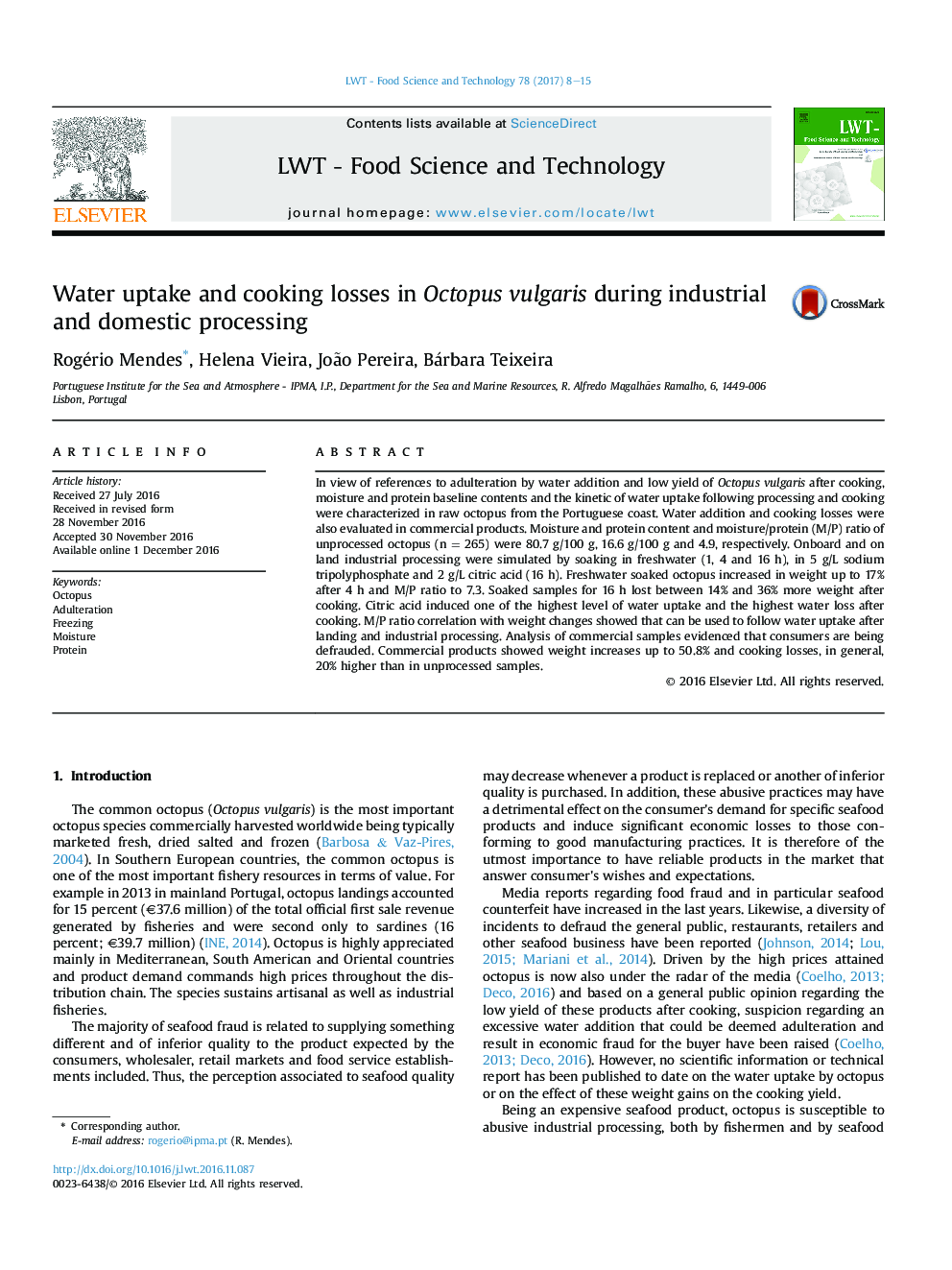| کد مقاله | کد نشریه | سال انتشار | مقاله انگلیسی | نسخه تمام متن |
|---|---|---|---|---|
| 5769013 | 1628520 | 2017 | 8 صفحه PDF | دانلود رایگان |

- Natural octopus has mean moisture and protein of 80.7 and 16.6Â g/100Â g, respectively.
- Octopus soaked in freshwater or additives solutions show significant weight gains.
- Cooking losses significantly higher in freshwater or additives soaked octopus.
- Moisture/Protein ratio of the octopus muscle can be used to determine water uptake.
- Fraudulent addition of water occurs in commercial deep-frozen octopus.
In view of references to adulteration by water addition and low yield of Octopus vulgaris after cooking, moisture and protein baseline contents and the kinetic of water uptake following processing and cooking were characterized in raw octopus from the Portuguese coast. Water addition and cooking losses were also evaluated in commercial products. Moisture and protein content and moisture/protein (M/P) ratio of unprocessed octopus (n = 265) were 80.7 g/100 g, 16.6 g/100 g and 4.9, respectively. Onboard and on land industrial processing were simulated by soaking in freshwater (1, 4 and 16 h), in 5 g/L sodium tripolyphosphate and 2 g/L citric acid (16 h). Freshwater soaked octopus increased in weight up to 17% after 4 h and M/P ratio to 7.3. Soaked samples for 16 h lost between 14% and 36% more weight after cooking. Citric acid induced one of the highest level of water uptake and the highest water loss after cooking. M/P ratio correlation with weight changes showed that can be used to follow water uptake after landing and industrial processing. Analysis of commercial samples evidenced that consumers are being defrauded. Commercial products showed weight increases up to 50.8% and cooking losses, in general, 20% higher than in unprocessed samples.
Journal: LWT - Food Science and Technology - Volume 78, May 2017, Pages 8-15